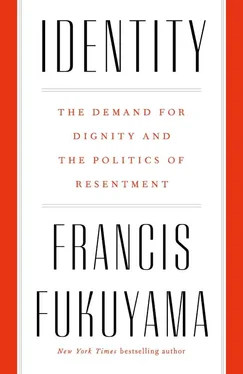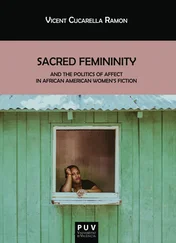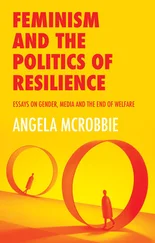The Roy-Kepel debate centers around a critical question: Is the rise of Islamist radicalism in the early twenty-first century best understood as an identity problem, or is it at base a genuinely religious phenomenon? That is, is it the by-product of the sociology of our age and the dislocations brought on by modernization and globalization, or does it represent a timeless feature of one particular religion, and the independent role of ideas in motivating human behavior? Answering this question is critical to knowing how to deal with the problem in practical terms.
These alternative interpretations are not, however, mutually exclusive; they may complement one another. Olivier Roy is correct in noting that the huge majority of the world’s Muslims are not radicals, which implies that explanations for extremism must be rooted in individual stories and social settings. Yet Kepel is correct that disaffected young European Muslims are not becoming anarcho-syndicalists or Communists, but jihadis preaching a particular version of Islam. Moreover, earlier generations of radicalized youth did not seek to blow themselves up in suicide attacks; specific ideas motivate this fashion.
Social change and ideology were also separate drivers of European nationalism. The identity confusion created by rapid modernization laid the groundwork for nationalism in Germany and other European countries. But it cannot be solely blamed for the rise of the particularly virulent and extreme version of nationalism represented by Adolf Hitler and his National Socialist Party. Other countries such as France, Britain, and the United States underwent similar social changes; they may have been tempted but ultimately did not succumb to similar radical nationalist doctrines. It took a brilliant political entrepreneur and ideologue such as Hitler, and the huge economic dislocations experienced by Germany in the 1920s and ’30s, to permit the rise of the Nazi movement.
Similarly, in the Middle East today, many Muslims feel identity confusion and have turned to religion as an answer to “Who am I?” This turn may take the innocuous form of wearing a hijab to work or a burkini at the beach. But for some it takes a more violent and dangerous turn in the form of political activism and terrorism. The extremist forms of Muslim identity being proffered in the early twenty-first century are no more compatible with international peace than were the nationalist doctrines of the early twentieth century.
Both nationalism and Islamism can thus be seen as a species of identity politics. Stating this does not do justice to the full complexity or specificity of either phenomenon. But they nonetheless have a number of important similarities. They both appeared on the world stage at moments of social transition from traditional isolated agrarian societies to modern ones connected to a broader and more diverse world. They both provide an ideology that explains why people feel lonely and confused, and both peddle in victimhood that lays the blame for an individual’s unhappy situation on groups of outsiders. And they both demand recognition of dignity in restrictive ways: not for all human beings, but for members of a particular national or religious group.
One of the striking characteristics of global politics in the second decade of the twenty-first century is that the dynamic new forces shaping it are nationalist or religious parties and politicians, the two faces of identity politics, rather than the class-based left-wing parties that were so prominent in the politics of the twentieth century.
Nationalism may have been sparked initially by industrialization and modernization, but it has in no way disappeared from the world, including in those countries that have been industrially developed for generations. A host of new populist nationalist leaders claiming democratic legitimacy via elections have emphasized national sovereignty and national traditions in the interest of “the people.” These leaders include Russia’s Putin, Turkey’s Erdoğan, Hungary’s Orbán, Poland’s Kaczynski, and finally Donald J. Trump in the United States, whose campaign slogans were Make America Great Again and America First. The Brexit movement in the United Kingdom has not had a clear leader, yet here too the basic impulse was a reassertion of national sovereignty. Populist parties are waiting in the wings in France, the Netherlands, and all over Scandinavia. Nationalist rhetoric has not been limited to these leaders, however; Prime Ministers Narendra Modi of India and Shinzo Abe of Japan have both been identified with nationalist causes, as has Xi Jinping of China, who has emphasized a socialism with distinctively Chinese characteristics.
At the same time, religion has been on the upswing as a political phenomenon. This is most obviously true in the Arab Middle East, where the 2011 Arab Spring was derailed by Islamist groups such as the Muslim Brotherhood and more radical terrorist organizations such as the Islamic State. While the latter has been nearly defeated militarily in Syria and Iraq, Islamist movements continue to spread in countries such as Bangladesh, Thailand, and the Philippines. In Indonesia, the popular Christian governor of Jakarta, Basuki Tjahaja Purnama (Ahok), was attacked for alleged blasphemy by increasingly self-confident Islamist groups and eventually jailed after narrowly losing his reelection bid. Islam is not the only form of politicized religion, however. Prime Minister Modi’s Bharatiya Janata Party (BJP) is explicitly based on a Hindu understanding of Indian national identity. A militant form of political Buddhism has been spreading in South and Southeast Asian countries such as Sri Lanka and Myanmar, where it has clashed with Muslim and Hindu groups. And religious groups form part of the conservative coalition in democracies such as Japan, Poland, and the United States. In Israel, a political order that had been dominated for more than a generation after independence by two European-style ideological parties, Labor and Likud, has seen an ever greater proportion of votes going to religious parties such as Shas or Agudath Israel.
The old class-based left has, by contrast, been in long-term decline around the globe. Communism collapsed in 1989–91, though versions of it hang on in North Korea and Cuba. Social democracy, one of the dominant forces shaping Western European politics in the two generations following World War II, has been in retreat. The German Social Democrats, who received over 40 percent of the vote in 1998, fell to just over 20 percent by 2016, while the French Socialist Party all but disappeared in 2017. Overall, center-left parties declined from 30 to 24 percent of the vote between 1993 and 2017 in Northern Europe, 36 to 21 percent in Southern Europe, and 25 to 18 percent in Central Europe. They are still major players, but a trend is clear. {1} 1 Sheri Berman, “The Lost Left,” Journal of Democracy 27 (4) (2016): 69–76. See also “Rose Thou Art Sick,” Economist , April 2, 2016.
Left-wing parties throughout Europe shifted to the center in the 1990s, accepting the logic of the market economy, and many became hard to distinguish from their coalition partners on the center-right. There were always Communist and other leftist groups in the Middle East during the Cold War; a self-styled Communist regime even came to power in South Yemen. Since then, however, they have been totally marginalized and left behind by Islamist parties. Left-wing populism made a strong showing primarily in parts of Latin America in the 1990s and 2000s, with the rise of Hugo Chávez in Venezuela, Luiz Inácio Lula da Silva in Brazil, and the Kirchners in Argentina. But this wave has already retreated, with the self-immolation of Venezuela under Chavez’s successor, Nicolás Maduro. The strong showings of Jeremy Corbyn in the United Kingdom and Bernie Sanders in the United States may be harbingers of a recovery, but parties of the left are nowhere the dominant forces they were through the late twentieth century.
Читать дальше












